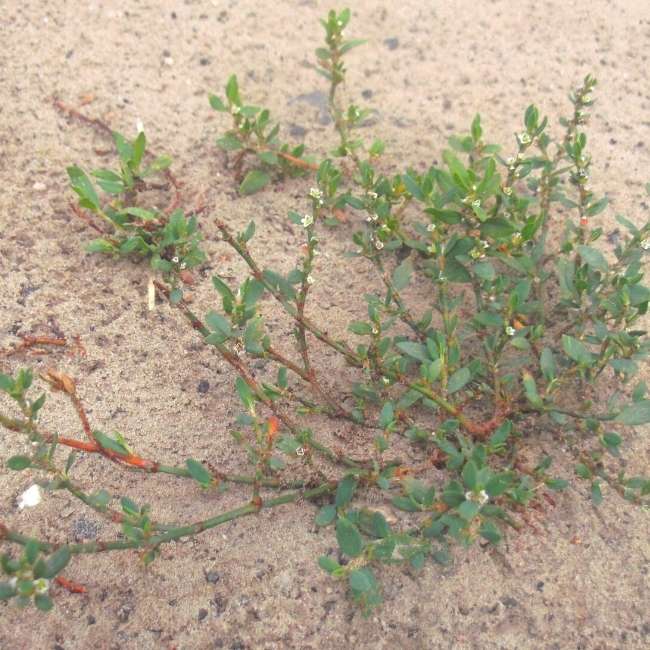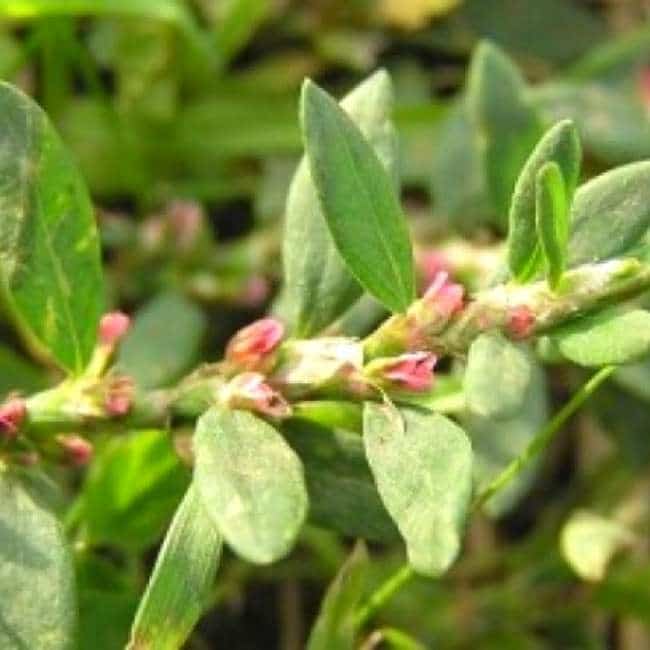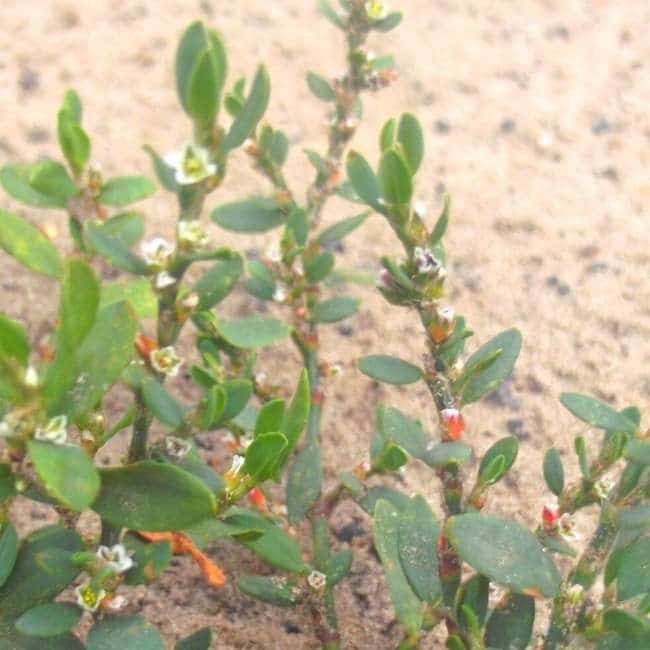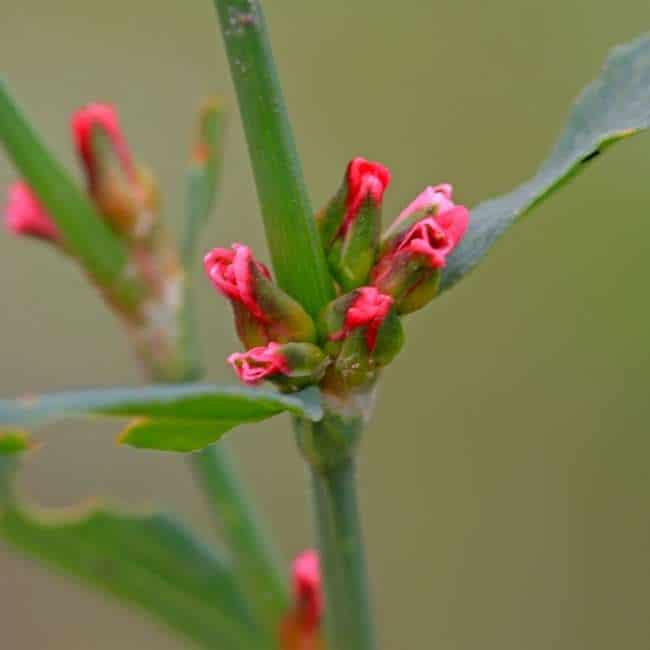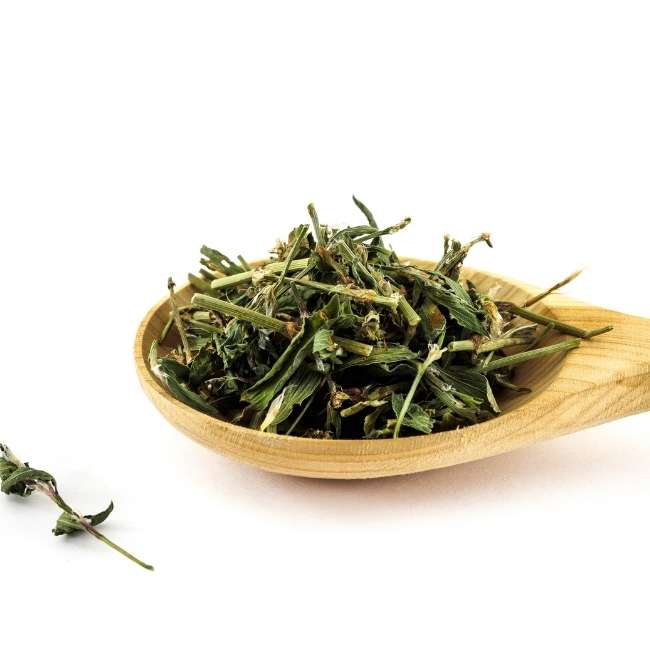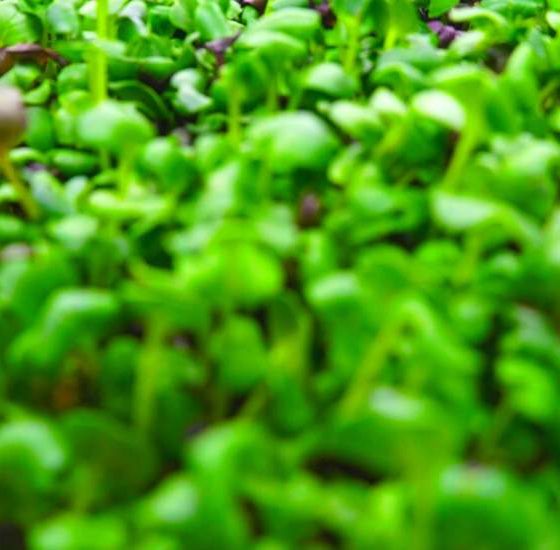Knotgrass Blooms from April To November On Gozo. Read About It’s Healing Qualities…
Foraging knotgrass. Find out why you would unearth this perennial.
The author of the fascinating book, Weeds For Health On Gozo, Heléna Szöllősy uncovers the natural benefits of Knotgrass as a remedy for many ailments and shares a tasty Turkish inspired recipe.
Lewża tar-raba
Botanical Name: Polygonum aviculare – L. Synonyms: Polygonum heterophyllum, Polygonum littorale, Polygonum nanum Family Name: Polygonaceae Maltese Name: Lewża tar-raba Common Names: Armstrong, Centinode, Common grass, Cowgrass, Hogweed, Knotweed, Pigweed, Prostrate knotweed, Red Robin... Meaning of the Name: Polygonum, from Greek, polys, πολυϛ, πολλη, πολυ, much, many, frequent; large; heavy; gonu, a knee-joint; from the many joints in the stem, aviculare, from Latin, avisbird; relating to small birds.
DESCRIPTION
Common knotgrass is an annual herb with a semi-erect stem that may grow to 10 to 40 cm high. The leaves are hairless and short-stalked. They are longish-elliptical with short stalks and rounded bases; the upper ones are few and are linear and stalkless. The stipules are fused into a stem-enclosing, translucent sheath known as an ochrea that is membranous and silvery. The flowers are regular, green with white or pink margins. Each has five perianth segments, overlapping at the base, five to eight stamens and three fused carpels.
On Gozo, it flowers from April to November. The fruit is a dark brown, three-edged nut. The seeds need light to germinate which is why this plant appears in disturbed soil in locations where its seeds may have lain dormant for years.
- Habitats: Waste places, roadsides, railway embankments and the coast. A common garden weed.
- Range: Throughout Europe to Temperate Asia.
- Status for Malta: Originating from Maltese islands. Very common in the wild.
- Parts Used: leaves, seed.
- Herbal Actions: Anthelmintic, Antiphlogistic, Astringent, Cardiotonic, Cholagogue, Diuretic, Emetic, Emollient, Expectorant, Febrifuge, Haemostatic, Lithotripsic, Purgative, Vasoconstrictor, Vulnerary
- Main Active Constituents: ascorbic acid, carotin, cellulose, minerals (phosphor, calcium, zinc, silicium), oxalic acid, proteins, sugars, tannins.
INTERNAL USES:
- Knotgrass is known to improve the elasticity and strength of connective tissues in the body, especially the joints, it also works as an anti-inflammatory by helping the body eliminate toxins. This herb is a slow and gentle treatment, so treatments may take several months to be effective. It supports the function of the musculoskeletal system.
- Knotweed is a safe and effective astringent and diuretic herb that is used mainly in the treatment of complaints such as dysentery and haemorrhoids. It has been used for centuries in folk medicine for coughs, bronchial catarrh, inflammations of the mouth and upper respiratory tract, liver, and kidney disorders.
- It is also taken in the treatment of pulmonary complaints because the silicic acid it contains strengthens connective tissue in the lungs.
- It was formerly widely used as an astringent both internally and externally in the treatment of wounds, bleeding, piles, and diarrhoea. Its diuretic properties make it useful in removing stones.
- The leaves are anthelmintic, diuretic and emollient. The whole plant is anthelmintic, antiphlogistic and diuretic. The juice of the plant is weakly diuretic, expectorant and vasoconstrictor. The seeds are emetic and purgative.
- Recent research has shown that the plant is a useful medicine for bacterial dysentery. Of 108 people with this disease, 104 recovered within 5 days when treated internally with a paste of knotweed.
- It is a mild and quite diffusive relaxant and stimulant, antispasmodic in action and of decided usefulness in flatulent colic and painful menstruation.
- Knotgrass has a diuretic activity helping to increase elimination of unwanted toxic waste alleviating inflammatory conditions such as arthritis, gout, repetitive strain, and skin inflammation. When taken for a long period, it is a good solvent for kidney and bladder stones. It also helps to expel urinary tract stones.
- Knotgrass is an astringent to combat bed-wetting and recommended for diarrhoea, dysentery, and enteritis. It is good for bronchitis, whooping cough, jaundice, and lung problems.
- As a blood coagulant, it is useful for all forms of internal bleeding, including stomach ulcers; snake bites, blood purifier, inflammations, swellings, toothache, gangrene, canker sores, venereal sores, ear infections, pyelitis and piles.
- Knotgrass has been successfully used for cholera infantum, a serious condition with simultaneous vomiting and diarrhoea in infants.
- The decoction made from knotgrass was administered to kill worms.
- Taken regularly, the tea or the tincture dissolves gravel and stones.
Precautions: Although no specific mention has been made for this species, there have been reports that some members of this genus can cause photosensitivity in susceptible people. Do not use it if you have blood clots.
EXTERNAL USES:
- The fresh juice has been found effectual to stay bleeding of the nose, squirted up the nose and applied to the temples.
- A strong tea held in the mouth for 5 minutes relieves toothache and stops bleeding gums. Prolonged use is said to harden loose, spongy gums and make teeth less sensitive and can be used against gingivitis. Helps prevent tooth decay.
- An ointment made from the plant is an excellent remedy for sores.
- Externally in the form of baths it is great for various skin diseases in children.
- As a gargle for sore throats and as a douche for vaginal inflammations.
- An alcohol-based preparation has been used with success to treat varicose veins of recent origin.
- Yields a blue dye that is not much inferior to indigo. The part used is not specified, but it is likely to be the leaves. Yellow and green dyes are obtained from the whole plant.
EDIBLE USES:
- Young leaves and plants – raw or cooked. Used as a potherb, they are extraordinarily rich in zinc. The leaves are a tea substitute.
- Seed – raw or cooked. Rather small and fiddly to utilize, they can be used in all the ways that buckwheat (Fagopyrum esculentum) is used, either whole or dried and ground into a powder for use in pancakes, biscuits and pinole.
Make Knotgrass with Turkish Pastrami
ingredients
- 500-gram knotgrass
- 100-gram pastrami optional
- 3 tablespoon ground bulghur
- 1 onion chopped.
- 5 garlic cloves halved.
- 2 tablespoon tomato paste
- 3 tablespoon olive oil
- 1 teaspoon salt
- 300 millilitre warm water
preparation
Wash the knotgrass. Cut to edible pieces. Chop the onions. Add the olive oil to a large pot. Add the onions. Cook until they soften and then add the garlic and cook for another minute. Add the tomato paste and cook, mixing, for another two minutes. Slice the pastrami to small pieces. If not, available you can also use sucuk, also slices. Or you can completely skip this step to make a vegetarian dish, which will be good as well. Add the knotgrass. Sauté it, until it starts to leave off its water. Add 3 tablespoons grounded bulghur.
Mix. Add about a glass of warm water. Cover the lid. Cook first high, and then low heat until the bulghur and the knotgrass is cooked. Add salt, mix, and close the heat. Serve with warm as a main dish with plain yogurt. You can also use yogurt with crushed garlic. Enjoy.
Author : Heléna Szöllősy. Editor: GITH

Helena is an expert on the medicinal properties of plants having trained in Herbal Medicine and Naturopathy, specialising in Phytotherapy including Homeopathy, Aromatherapy, Apitherapy and Bach Flower Therapy.
Information on the traditional uses and properties of herbs are provided in this book for educational purposes only and is not intended as medical advice. This information is not intended to be used to diagnose, prescribe or replace professional medical care. If you have any serious health concerns, you should always check with your health care practitioner before self-administering herbs. Please also undertake your own research when foraging. Some wild plants are endangered and are protected by law.
Want to learn what else you can forage on Gozo? Click here.


